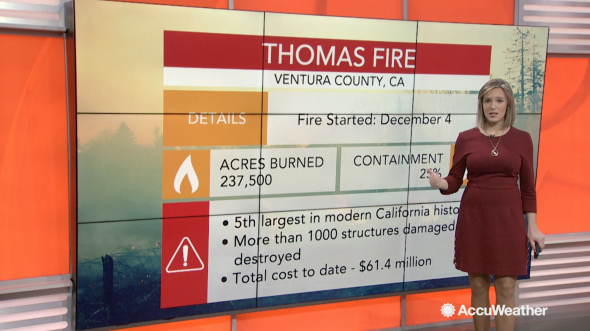Meteorologists explain why we should ditch the outdated term 'weather girl'
Whether tuning into AccuWeather or watching the forecast on your local news station, chances are that your favorite "weather girl" would much rather be referred to by her hard-earned title: meteorologist.
"When I hear the term ‘weather girl,' it's kind of like people don't know exactly what you went through to get your education," said AccuWeather Broadcast Meteorologist Brittany Boyer.
"It knocks on the credibility that you have as a meteorologist," she added.
The term dates back to the 1950s, when attractive women weathercasters were hired by television station managers in an attempt to boost struggling ratings.
Often having no scientific background, weather girls cheerfully presented the forecasts by using gimmicks, including costumes such as bathing suits.

Today, educated scientists who are passionate about predicting the weather continue to fight against the use of the outdated term, which some feel undermines the immense effort that went into obtaining their meteorological credentials.
A number of female broadcast meteorologists, including ABC News Chief Meteorologist Ginger Zee, have been vocal about doing away with "weather girl."
"These aren't just women who are hired to stand there and point and smile at a map; we actually do know what we're talking about," said AccuWeather Broadcast Meteorologist Julia Weiden.
However, most meteorologists seem to agree that people generally don't mean any harm by using the term.
"A lot of times, people are very genuine when they say ‘weather girl,' but there are times when it can be used [in] a negative connotation," said AccuWeather Broadcast Meteorologist Melissa Constanzer.
"‘Girl' obviously means a little bit younger than a woman, so maybe not as mature, maybe not as smart," she said.
When it comes to smarts, the vast majority of women who present on-air weather forecasts are more than qualified, having undertaken rigorous studies to obtain their degrees.
"My degrees are in meteorology, math and geographical information sciences," said AccuWeather Broadcast Meteorologist Laura Velasquez, who is approaching her 11th year of working in broadcasting and meteorology.
"I really like the science-y, math-y, geeky part of my job, but I'm also very interested in the societal impacts of weather and [how it affects people's lives]," she said.
Meteorologists have said that they are working to push away the perception of the stereotypical "weather girl" in hopes of influencing future generations of female scientists.
Inspiring future scientists
These educated scientists serve as role models to young girls interested in pursuing eventual careers in science, technology, engineering and mathematics.
There's been a shortage of women in STEM fields, which have long been male-dominated.
Girlstart, a Texas-based organization that strives to encourage young girls to consider STEM fields with innovative education programs, implemented the month-long virtual program DeSTEMber to continue building STEM awareness for children and their families.
"We were thinking about ways we engage girls outside of school time, and one of the biggest challenges is keeping kids [involved in] STEM during their school breaks," said Girlstart Deputy Director Julie Shannan.
"That's how DeSTEMber was born," she said. "It's 31 days of STEM for the whole family, and [we] make it really accessible for families by using a lot of household, readily available items."
Chikage Windler, CBS Austin's chief meteorologist, regularly volunteers with Girlstart in hopes of encouraging girls to explore the wide variety of STEM options that are available to them.
"When I was growing up, there wasn't something that I had access to that was the equivalent to Girlstart," said Windler.
"They're starting girls at a very young age, showing [them] that it's fun, it's cool, it's okay to be smart, it's okay to be geeky, it's okay to love science and math," she added.
Windler is one of only 8 percent of female chief meteorologists on television in the United States, according to a study conducted by broadcast meteorologist Alexandra Cranford.
The study also found that women comprise just 29 percent of television weathercaster roles.
"More and more women are becoming meteorologists, but because it was always a male-dominated field, I think it's going to take some time before there's an equal number of male and female chief meteorologists," Windler said.
Meteorologists agree that a key part of bridging the gap is introducing more girls and women to STEM.
"We need more young girls to gain interest in STEM majors, and hopefully, with having female role models on TV, more girls and women will get interested in meteorology," Boyer said.
